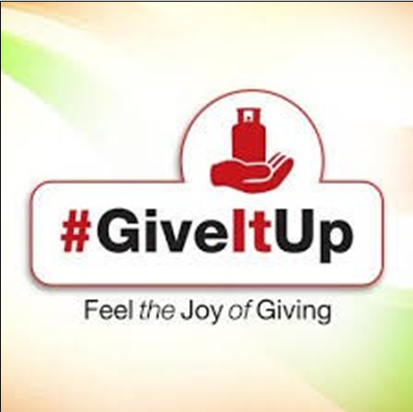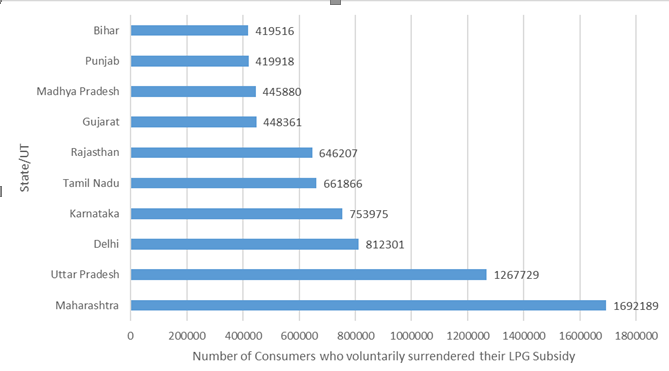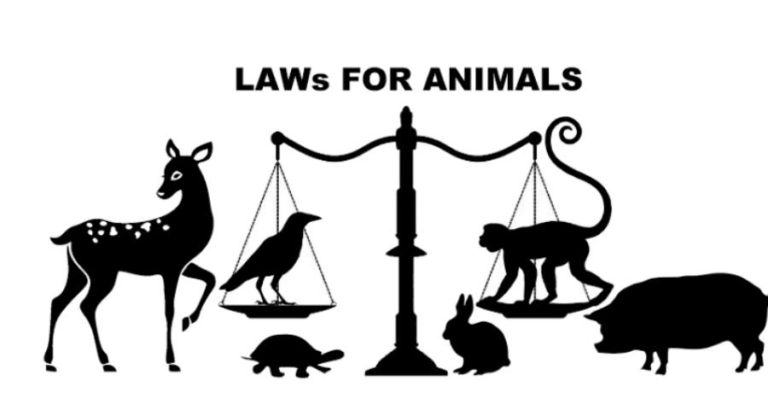
Abstract
The “Give It Up” LPG subsidy campaign in India, launched in 2015, aimed to promote fiscal responsibility by encouraging economically well-off consumers to voluntarily surrender their LPG subsidy. This initiative, rooted in the principles of behavioral economics, was designed to nudge citizens toward actions that benefit public welfare. Leveraging concepts of behavioral economics in public policy, the campaign sought to reduce the financial burden on the government while promoting equitable resource allocation.
This research paper examines the “Give It Up” campaign, analyzing its effectiveness through state-wise consumer data on voluntary subsidy surrender, while the campaign successfully garnered participation from millions of households, the results varied significantly across regions. Key challenges as well as lessons learned from this campaign are also discussed. The paper also analyses the impact of this scheme and how the Indian government can use behavioral economics in their favour by using nudging in public policy.
Introduction
The single largest contributor to poor air quality in India is the household sources of ambient air pollution which refers to heating and cooking actions. Therefore, the government launched Pradhan Mantri Ujjwala Yojana (PMUY) in 2016 as a social welfare scheme to provide subsidised LPG (Liquified Petroleum Gas) connections to 103 million women from the poorest families. LPG is a clean, modern fuel which is heavily subsidised in India by the government and each cylinder that is used for household purposes carries a substantial subsidy. This directly translates to a huge economic burden on the Indian government.
Before PMUY, 87% of real households used biomass to cook (Chandramouli, 2012), since solid biomass fuels like wood, charcoal, or dung are cheap or freely available. Since 2016, following the launch of PMUY, the proportion of households with access to LPG has increased significantly. In March 2015, the “Give It Up” campaign was launched, three months after PaHaL’s (Pratyaksh Hanstantrit Labh) all India rollout. This campaign marketed by the government uses behavioral economics concepts to promote desirable actions and behavior in the consumers.

Research Objectives and Questions of the study
- To analyze the role of behavioral economics and social norms in the success of the Give It Up LPG Subsidy campaign.
- To assess the economic implications of the Give It Up campaign in reducing the government’s subsidy burden.
- To identify the key factors that influenced public participation and resistance in the Give It Up campaign.
- To provide policy recommendations for improving future nudge-based interventions in public policy.
- How effectively did the Give It Up campaign use social norms and nudges to influence public behavior?
- What economic benefits did the campaign generate for India’s fiscal policies?
- What factors led to resistance or non-participation in the campaign, and how can these be mitigated in future interventions?
- Can the behavioral changes initiated by the Give It Up campaign be sustained over the long term without continued nudging?
Behavioral Economics and the Influence of Social Norms in Public Policy
Behavioral economics is a comparatively newer concept which was mainstreamed by Richard Thaler in 2017 when he was awarded the Nobel Memorial Prize in Economic Sciences for his contributions to behavioral economics. Behavioral economics is the method of economic analysis that applies psychological insights into human behaviour to explain economic decision-making. According to a report published by the World Bank, World Development Report 2015: Mind, Society and Behavior, developmental policies are more effective to the society when they are made with taking into account the insights into human behaviour. Impressive improvements have been observed in the results of a scheme when policy decisions and behavioral economics work together to promote development and well-being in the society.
By focusing on morality and altruism which are an innate part of the human mind in any social setting, we can understand human behavior better as these behavioral insights examine why people make irrational; decisions as opposed to acting like rational economic agents. Recent researches have proved and emphasized on the fact that only a few “good” human beings can have an overall better impact on the society by their actions and influence, one of the prime examples being the social reformers. Social norms refer to shared beliefs about appropriate behavior: one’s beliefs about what others do and how others would judge one’s own actions (Bicchieri, 2016). For example, if I believe that other people in my social class will forgo the subsidy, and would look badly on me for not doing so, I may decide to forgo the subsidy myself.
In the book “Nudge” by Richard Thaler and Cass Sunstein, they introduced a new concept as nudge theory which attempts to influence how individuals make decisions not by restricting them as such, but by presenting them with choices in a different manner. Human beings are not assumed to be rational, therefore, encouragement and intervention by the government for best possible outcome to utilise the resources by the consumers is known as nudging. Other authors like Daniel Kahneman and Dan Ariely also carried this theory and elaborated in their respective books with other examples.
Nudge means giving a push and not a shove in the preferred direction, hence, nudges are subtle adjustments that guide people towards more optimal decisions and strategically altering the context in which decisions are made. This gentle steer to consumers towards desirable behavioral should not undermine the liberty to choose and preserve that right. The core mechanisms of nudge theory work by adjusting the choice architecture, making it easier for people to make beneficial decisions without restricting their freedom of choice. The method by which choices are offered is called choice architecture. It is the environment where we choose and the design of different ways in which choices can be presented to decision makers and the impact of the presentation on final decision making.
People need reminders and positive reinforcement to sustain socially desirable behaviour and the use of behavioral insights in public policy results in remarkable power in change in behavior and cost effective actions. Some of the successful examples by the Indian government are- Swachh Bharat Mission, Beti Bachao Beti Padhao, and the GiveItUp Campaign where policy shift encourages people to make decisions but does not penalize them, rather just makes it easier to take certain decisions. Few international successful examples of behavioral economics use in policy making is the pension policy of the UK where savings grew 4x in 4 years with the help of automatic enrolment scheme rather than manual savings account and organ donation case study in Spain where they changed from opt in system to opt out system and nudged the consumers which resulted to significant difference in organ donation enrollment.
The “Give It Up” LPG Subsidy Campaign: Design and Implementation
LPG Subsidy program has been divided into three phases of policy reforms aimed at meeting the dual objective of increasing access to clean cooking fuel and reducing the fiscal burden of LPG subsidies in India (Mittal, Mukherjee and Gelb, 2017). These phases are –
Phase 1: Cap consumption of subsidised LPG cylinders for household consumers, starting from 2012-2013
Phase 2: Direct transfer of subsidy to consumer’s bank accounts through PaHaL (Pratyaksh Hanstantrit Labh) for LPG consumers implemented during 2013-2015.
Phase 3: Identify and target different consumer segments from 2015 onwards where :
- Excluding the richer household with the help of “Give It Up” LPG Subsidy Campaign
- Targeting the poor households through PMUY (Pradhan Mantri Ujjwala Yojana) through targeted one-time LGP setup and regular LPG price subsidies
Influence spectrum of public policy is divided into four types which are Laissez Faire, Nudge, Incentivize and Mandate. Laissez faire method of public policy implementation is where the government makes policy and leaves it to the people if they want to follow it appealing to people’s morality and altruism. Nudge policy focuses on changing the behavior of the human for betterment of the society and nudging towards a desirable behavior without restricting choices. Incentivizing means positive or negative incentives given to promote specific actions. Mandate refers to compulsory implementation of policy by the government like banning certain items in specific states.

Image Source:Policy for Homo Sapiens, Not Homo Economicus: Leveraging Behavioural Economics of “Nudge”
The above figure gives a visual presentation of how the schemes implemented by the Indian government span across the broad types of influence spectrum. One of the schemes mentioned above is the Give It Up Campaign, which encouraged above poverty line(APL) households to voluntarily surrender the LPG subsidies. For every household that gave it up, one below poverty line (BPL) household would receive a gas connection. Give it up was entirely left on the individual’s choice and this campaign was heavily advertised in the media with messages appealing both to people’s sense of altruism and to national pride.

Image Source: Ministry of Petroleum and Natural Gas
The figure gives a graphical representation of the top 10 States/UT where the consumers have voluntarily surrendered their LPG Subsidy under GiveItUp Campaign as on 01.03.2018. As the above Figure shows, while the “Give It Up” campaign heralded a significant change in the form of voluntary giving up of subsidies, the overall response to the campaign could be improved from the one crore who have given it up. While this represents a good beginning, the potential to expand this number remains large.
Like Swachh Bharat Mission (SBM) and Beti Bachao, Beti Padhao (BBBP), “Give It Up” also relies on a change in behaviour. In fact, Give It Up’s task is less vigorous than BBBP and SBM – while the latter programmes require continuous effort to dislodge mind-sets that have prevailed for decades, “Give It Up” requires only a one-time action that is inconsequential to most affluent households.
Challenges Observed in the Nudge Theory
Some economists say that this theory promotes paternalistic views, which is the belief that the government decides what’s the best for us. They argue that individuals should get more freedom in determining their choices and that the government should not harm civil liberty. Although there is no financial penalty, nudges can be harmful if not used ethically.
The limited effectiveness of such nudges are also considered as challenges incurred like warning images on cigarette packs for smoking might not be effective and habitual consumers are unlikely to be put off by such images. This lack of guaranteed effectiveness and administrative costs for operating such schemes become a burden on the government as costs on research, development and enacting policies are inevitable. The major criticism of using nudge theory in public policy is that it is not a stand alone solution and works best with combining other policies thereby increasing the government’s economic burden.
Lessons for Future Nudge-Based Interventions
Lessons learned after retrospective research is that the nudges to be implemented should be designed in a way which makes them:
- Easy to use , for instance: having the desirable outcome as pre-selected or default options and decreasing the friction for the consumer. This is because individuals suffer from a cognitive bias called “anchoring bias”, viz., once a default option is presented to them, they anchor on to it (Tversky and Kahneman, 1974).
- Making the nudge attractive and appealing to the consumers by offering incentive and customizing the message to attract attention.
- Focusing on the social aspect of the nudge theory and using social norms as well as levering trust to the policymaker’s advantage. Nudge theory works best when taken advantage of pre-existing networks.
- Timely intervention of the nudge and making it convenient and receptive to that message. For example: asking for rounding up the order while checking out and before payment to donate the change is a preferable use of nudge rather than asking at the beginning.
- Focusing on the implementation of opt in scheme or opt out scheme according to the policy described and using digital nudges to nudge people for good.
Conclusion
Behavioural economics tells us that even if people are truly interested in giving up their subsidies; their actions may differ from their intent as they need to be moved to action with a gentle nudge. A good choice architecture can aid in closing this gap between intention and action. For campaigns like Give It Up, the default choice matters immensely. People have a strong tendency to go with the status quo. Many governments have leveraged this insight to change the default option and thereby increase the efficacy of their programmes. “Give It Up” needs to employ this insight. Given their inactiveness, of the nineteen crore people who did not give up their subsidy, many may have intended to give up their subsidy but have simply not been nudged to action.
While acknowledging that the reforms have been able to address inefficiencies and inequities in the existing system, it needs to be kept in mind that the mode of delivery of LPG remains the same. This will certainly change in the next decade. With rapid urbanization and modernization of infrastructure, a large section of consumers will be able to access cooking gas through direct piped connections as is the norm in almost all developed countries. The success of PaHaL will be further amplified if it can be applied to new technologies and delivery mechanisms of the future.




